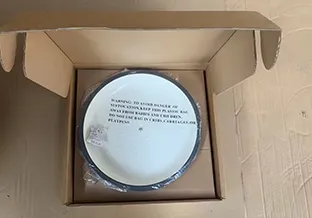
cast iron grill pan on glass top stove
Cooking with a Cast Iron Grill Pan on a Glass-Top Stove
In recent years, cooking enthusiasts have embraced various cookware materials, with cast iron standing out for its durability and excellent heat retention. A cast iron grill pan, in particular, is a fantastic kitchen tool that can help users achieve restaurant-quality grilled dishes right in their homes. While using a cast iron grill pan on traditional stovetops is widely accepted, the advent of glass-top stoves has raised questions about compatibility and safety. This article explores the benefits of using a cast iron grill pan on a glass-top stove, practical tips for safe use, and the delicious outcomes you can expect.
The Benefits of Cast Iron Grill Pans
Cast iron grill pans are celebrated for their ability to distribute heat evenly, providing consistent cooking results. They can achieve high temperatures that help sear and lock in flavors, making them ideal for grilling meats, vegetables, and even sandwiches. The natural non-stick surface that develops over time adds to their appeal, reducing the amount of oil or butter needed for cooking, while still imparting a delightful char and flavor to the food.
When combined with a glass-top stove, a cast iron grill pan can elevate your cooking experience. Glass-top stoves are sleek and easier to clean compared to their traditional coil counterparts, providing a stylish addition to modern kitchens. They also offer precise temperature controls, which, when paired with the heat retention of cast iron, allows for a variety of cooking techniques—from searing and sautéing to slow cooking and simmering.
Safety First Tips for Using Cast Iron on Glass-Top Stoves
Using a cast iron grill pan on a glass-top stove is generally safe, but there are specific precautions to ensure the longevity of both your cookware and your stove. Here are some valuable tips
1. Avoid Dragging the Pan Glass tops can scratch easily. When moving your cast iron grill pan, lift it to prevent scratching the glass surface.
cast iron grill pan on glass top stove

2. Preheat Gently Unlike traditional gas stoves, glass-top stoves heat up more slowly. Start with a medium heat to avoid thermal shock to your grill pan. Gradually increase the heat to your desired level.
3. Use Flat-Bottomed Pans Ensure that your cast iron grill pan is flat-bottomed and sits evenly on the stove. A warped pan can disrupt the heat distribution and create uneven cooking.
4. Watch the Weight Cast iron cookware is heavy. Be cautious when placing it on the glass surface to avoid cracking or damaging the stove.
5. Dry Thoroughly After washing your cast iron pan, thoroughly dry it to prevent rust, which can compromise its cooking performance.
Delicious Outcomes Await
Once you’ve taken the necessary precautions, the culinary possibilities are endless with a cast iron grill pan on a glass-top stove. Imagine perfectly grilled steaks with beautiful grill marks, tender asparagus with a slight char, or even decadent grilled cheese sandwiches with golden, crispy edges. The ability to maintain high heat levels allows you to replicate the flavors and textures of outdoor grilling, even if you're cooking indoors.
Moreover, the versatility of a cast iron grill pan means you can also switch things up with indoor favorites like pancakes or fajitas, utilizing the reheating properties that hold warmth long after you’ve removed the pan from heat.
In conclusion, cooking with a cast iron grill pan on a glass-top stove is not only feasible but also gratifying. With mindful usage and appreciation for the unique qualities of both the pan and stove, you can create mouthwatering dishes that delight your palate and impress your guests. So grab your cast iron grill pan, fire up that glass-top stove, and start your delicious culinary adventure today!
-
Season Cast Iron Perfectly with GPT-4 Turbo TipsNewsAug.01,2025
-
High Quality Cast Iron Cookware - Baixiang County Zhongda MachineryNewsAug.01,2025
-
Premium Cast Iron Pan: Durable & Perfect HeatNewsAug.01,2025
-
High Quality Kitchen Durable Black Round Cast Iron Cookware Pancake Crepe Pan-Baixiang County Zhongda Machinery Manufacturing Co., Ltd.NewsAug.01,2025
-
Cast Iron Cookware - Baixiang County Zhongda Machinery | Nonstick, Heat ResistanceNewsAug.01,2025
-
High Quality Kitchen Durable Black Round Cast Iron Cookware - Baixiang County Zhongda Machinery | Non-Stick, Heat Retention, DurableNewsJul.31,2025


